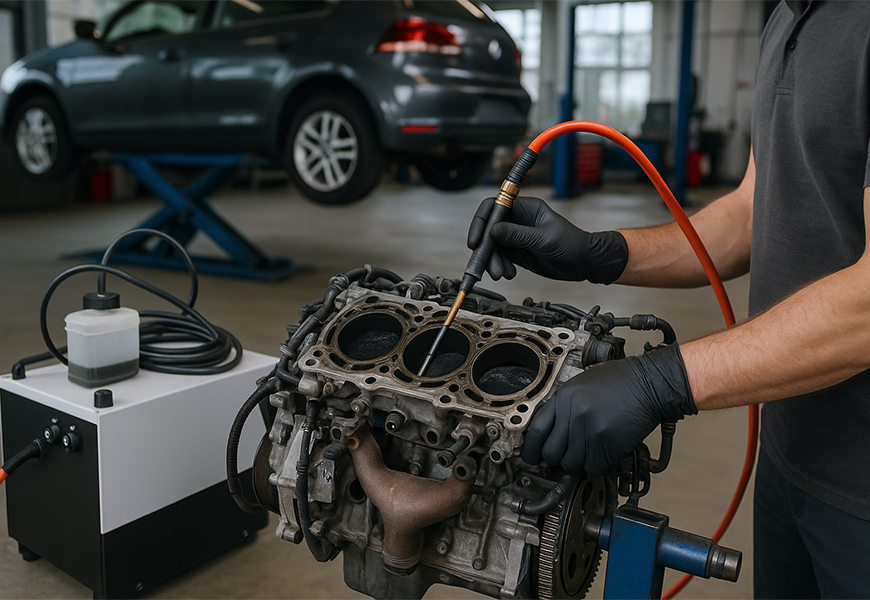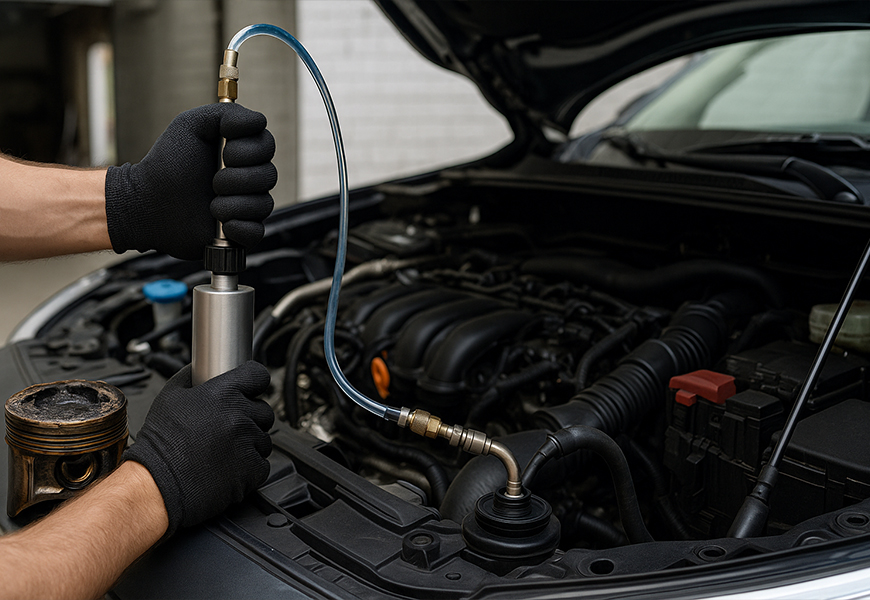What Is Engine Decarbonization and Why Is It Needed?

In modern cars, reduced engine power, increased oil consumption, or exhaust smoke are common issues. These problems are often caused by carbon buildup inside the engine — the accumulation of carbon deposits in the combustion chamber and other parts of the internal combustion engine. One of the most effective solutions is engine decarbonization. In this article, the “Autopark-Service” center in Lviv explains what this procedure is, who needs it, its benefits, and when it should be performed.
What Is Engine Decarbonization?
Decarbonization is the process of cleaning the combustion chamber, piston rings, valves, and other internal components of the engine from carbon, resin, and soot deposits. Over time, these deposits interfere with piston movement, reduce sealing, lower compression, and increase oil consumption.
The procedure can be performed without disassembling the engine (chemical or hydrogen decarbonization) or with partial disassembly, depending on the level of contamination.
When Is Decarbonization Needed?
Common signs that indicate the need for engine decarbonization:
- Increased engine oil consumption (the engine “burns” oil)
- Smoke from the exhaust pipe (often blue or bluish-white)
- Loss of power, especially during acceleration
- Rough idling or engine misfires
- Reduced compression in cylinders
- Increased fuel consumption
- The vehicle has not been used for a long time
- Frequent use of low-quality fuel
Causes of Carbon Buildup in the Engine
Carbon deposits form gradually due to:
- Poor fuel quality (high sulfur, additives, or impurities)
- Low-quality or overdue oil changes
- Short trips (the engine doesn’t reach operating temperature)
- Long periods of idling
- Malfunctioning fuel or ventilation system

Types of Engine Decarbonization Methods
- Chemical decarbonization (without engine disassembly):
Special cleaning fluids or aerosols are used — they are poured into the combustion chamber or crankcase. They dissolve carbon deposits, which are then expelled through the exhaust gases or removed during an oil change. - Hydrogen (water-based) decarbonization:
An environmentally friendly and safe method that introduces hydrogen and oxygen into the intake system. As a result of the chemical reaction, carbon deposits “burn off” without damaging engine components. - Mechanical cleaning:
Used less frequently and requires partial engine disassembly. Effective in severe cases when other methods fail.
Benefits of Engine Decarbonization:
- Restored engine power
- Reduced oil and fuel consumption
- Lower exhaust smoke
- Improved compression
- Extended engine life without major repairs
- Significant savings on costly repairs in the future
How Often Should You Perform Engine Decarbonization?
- Every 60,000–100,000 km as a preventive measure
- After using low-quality fuel
- Before or instead of a full engine overhaul — as a “last chance”
- When buying a used car, especially if you suspect a high or tampered mileage
Where to Perform Engine Decarbonization in Lviv?
At “Autopark-Service” in Lviv, we offer:
- Chemical and hydrogen engine decarbonization
- Preliminary diagnostics of compression and oil condition
- Service for both gasoline and diesel engines
- Use of high-quality, catalyst- and turbo-safe products
- Warranty on all performed work
Conclusion
Engine decarbonization is not “magic” but a real and effective technical procedure that helps restore engine performance without costly repairs. Don’t ignore the warning signs your car gives you. If you’ve noticed power loss or increased oil consumption — decarbonization might save your engine.
Contact “Autopark-Service” in Lviv — we know how to bring your engine back to life!
